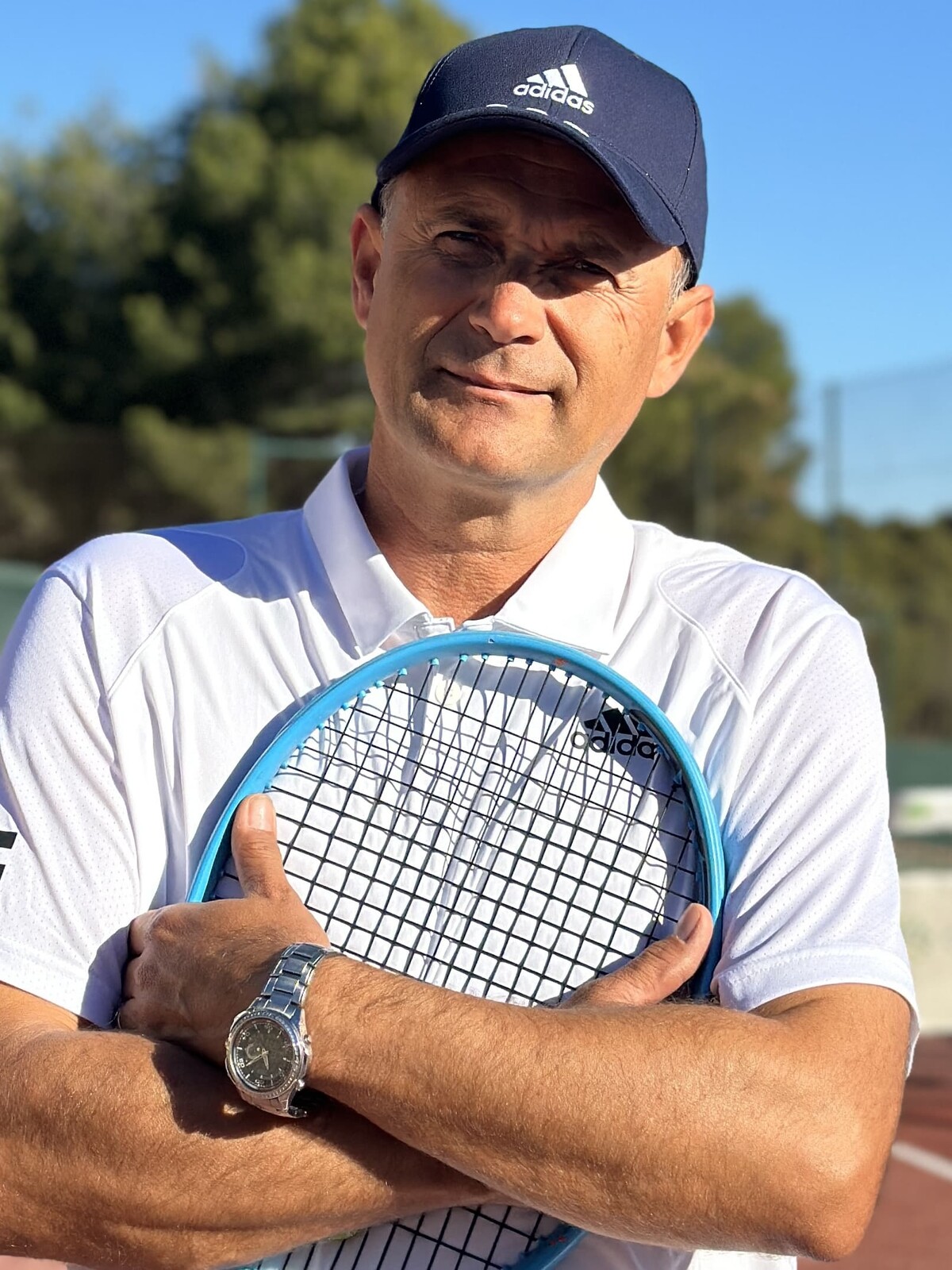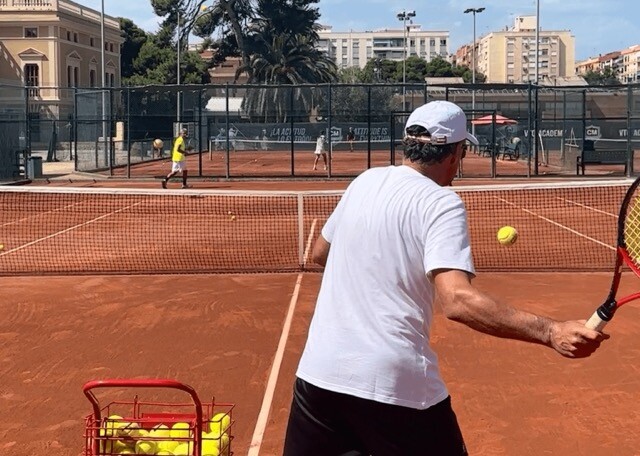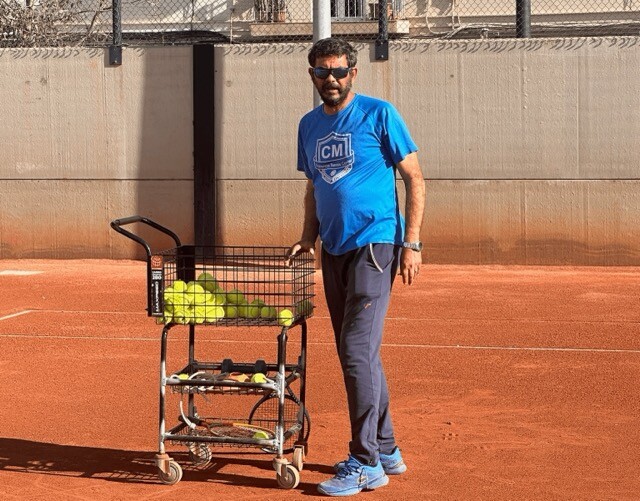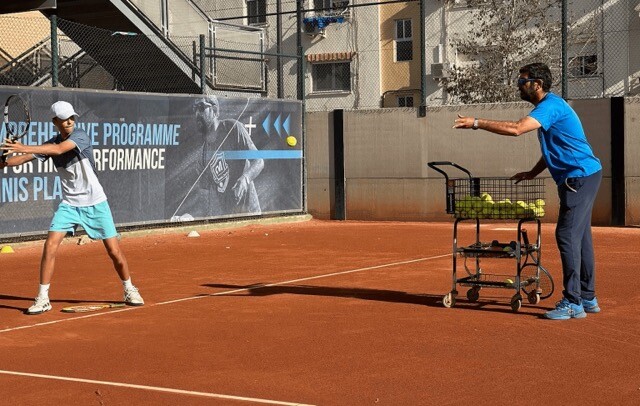Best Tennis Drills to Master in 2023
The role of drills in improving tennis skills and performance.Tennis training is very long, requiring attention to many things, such as technique and movement around the court. And, of course, let’s remember about fun. When …
Written by: Sergio Dronov
Published on: December 26, 2023
The role of drills in improving tennis skills and performance.
Tennis training is very long, requiring attention to many things, such as technique and movement around the court. And, of course, let’s remember about fun. When we organize tennis training, we have to consider our players’ learning, health, and well-being and do our best to make them achieve their goals.
Basket drills are part of any tennis training. I will share my experience and some exercises for successful tennis training in this article.
Table of Contents
- Why Drills Matter in Tennis
- Essential Drills for All Levels
- Advanced Drills
- Stamina and Endurance
- Mental Toughness Drills
- Fun Drills for Group Play and Doubles
- Drills Incorporating Technology

Sergio Dronov is extremely knowledgeable about tennis and has effective training methods. He coached Yaroslava Shvedova, who ranked third in the world in doubles and won two Grand Slam tournaments. In addition to working with Shvedova, Sergio has trained with Marat Safin, ATP #1 in the world in 2000, and his sister Dinara Safina, WTA #1 in the world in 2009.

Why Drills Matter in Tennis
Reinforcement of muscle memory
When we look at the aspects of the stroke execution technique, we have to understand that the movement must be unconscious but correct simultaneously. This is where the problem lies. If I make the movement without knowing exactly how I can make a wrong stroke. With many repetitions of a poorly executed stroke, I can get it done automatically, leading me to make many mistakes in the future. That is why in the phase of learning a correct movement, we not only have to learn the movement but also memorize it. Muscle memory. For this, it is very important to do many repetitions practically in the same position, at the same speed as the ball, and dedicating a lot of tension to the gesture.
When we do exercises with a basket in training, we must know that this exercise will memorize the stroke. The role of the trainer is fundamental since, in training, he has to constantly correct the student so that the player does not memorize the wrong movement. Normally, over repetitions of 10, 15, or even more strokes in a row, trying to make them the same.

Enhancement of footwork, technique, and court awareness
e we have corrected the technique, we will look for displacements. The court, in the end, is a rectangle. It is a space where the game takes place. Doing exercises with baskets, you can make varied displacements at the back of the court, entering to hit short balls and making transitions to the net, finishing with the volleys or smash.
It is very convenient for the trainer to use the baskets for this type of exercise since he can vary the spacing between the shots and the training rhythm. The coach can more efficiently create the situations the player may encounter later in a match.
This way, the player learns to hit and move well on the court and gets a better feeling of the game, which is very important for tennis.
Preparation for real-match scenarios
We can pay attention to tactical plays when trained separately in technique, court displacement, and footwork. The training of baskets allows us to simulate a situation very close to what the player may encounter in a game after training correctly. The tactical exercises on the competition court make you feel much more confident.
Essential Drills for All Levels
Basics and Warm-ups
Short Court Rallies: Focus on control and placement.
Mid-court drills allow us to play at slow speeds and thus pay more attention to the execution of the movement. Good position, good distance, good sensations. Mid-court exercises are also useful for a good warm-up.

Service Box Touch: Improving soft touch and finesse shots.
Hitting softly improves sensations and distance between the body and the ball. These exercises can be combined with hitting with the ball bounce and volleys. The coach can vary the height. Here, we are not looking for a strong hit, but we are looking for a correct hit.
Groundstrokes
Cross-Court Consistency: Establishing rally and improving stroke technique.
An exercise with baskets that can be noticed is cross strokes. We train stability, precision, and the correct execution of the blows.
Down-the-Line Precision: Aiming for targets to enhance accuracy.
Parallel strokes are a little more difficult. They require a better position of the feet. Correct transfer of body forces. To avoid monotony with the directions, paying attention to some variations, such as combining cross strokes with some parallel strokes and the other way around after a series of precise parallel strokes, is recommended. Making a cross or even changing to a short cross is possible.

Volleys and Net Play
Approach and Volley: Transitioning from baseline to net.
Once we have practiced the groundstrokes, we can practice the mid-court strokes, which are usually winners or transition strokes to move towards the net and finish the point with the volley or smash.
In the first stage, we train the mid-court strokes independently. We look for strength and precision. The mid-court stroke exercises are usually of a few consecutive strokes. They are usually stronger, and we do not do long series to avoid injuries.
We will combine ground strokes with attacking mid-court strokes when we have achieved some confidence. A good drill would be 4 or 5 groundstrokes combining forehand and backhand strokes and a forehand mid-court ball winner. From here, we can build similar drills that are very good for moving around the court, feeling comfortable in the background, and entering the attack.
Drop shot and Lob Combinations: Managing touch and defensive shots.
In addition to the above-mentioned exercises, which are more common, there is a situation that happens less often than the drop-shot: the auctions are the lobs. The exercises with baskets are ideal for training in such situations as groundstrokes, mid-court, defense, and attacking shots, drop shots, backhands, and lobs, and can be trained independently and together.
After doing several exercises with volleys only, they can be combined with attacking strokes to a half-court or even make complete plays, including groundstrokes to half-court to attack and approach the net, finishing with attacking volleys or smash.
The drop shots can be trained with half-court strokes, backcourt strokes, or even the volley.
Serve and Return
Rapid Return Drills: Sharpening return reactions against first and second serves.
Little is said about the importance of the return of service. Here, when a player practices his serve, another player can practice the return of the serve. As almost all the exercises with the baskets have the objective of doing many repetitions to memorize both the game situation and the gesture, exercises can be done with repetitions of directions. A player always serves in the same place in this way; the one who trains the return knows where the ball will go and is prepared. He only has to focus on getting the stroke right and placing the ball accurately.
Footwork and Movement
Cone Drills: Enhancing agility and speed on the court.
I would like to highlight the possibility of training the agility of movements on the court by training with the exercises with the baskets. Here, the concepts of tennis training and physical preparation are intermingled. However, when we train on the court, the coach always pays more attention to the correct execution of the steps, good placement, and correct. Transfer of forces. Physical training is done, but with a clear technical focus that does not serve to play better in real situations.
Shadow Tennis: Practicing strokes and movement without the ball.
I love the varied exercises, where we can include some extra movements such as going around a cone, varying the directions of both hitting and deposition of the same, and using the movements without hitting what we call shadows. When a player makes a movement without hitting the ball, even more, he can pay attention to the correct execution consciously; he teaches his hand and body to make a good movement, especially when then comes a series of 2 or 3 or even more actual hits.
Advanced Drills
Tactical Scenarios
Simulating match situations and strategizing points.
At this stage, we no longer pay so much attention to the execution of the stroke, to the technique. We try to simulate the real game situation. We talk about tactics. In the match, everything happens too fast to stop to think and make decisions. In high-level and competitive tennis, you must think during training, not in the match. A match has too much stress, and the pace is frenetic. Training gives us time and the possibility to set the pace. We can think, look for the right decisions, and analyze our mistakes. The coach’s art is to develop customized plays for each player and each match situation. There is no limit to creativity. A good coach has to assess the strengths and weaknesses of each player and train the weak points to improve them and the strong points to make the play based on these points to reach victory.
Stamina and Endurance
Long rally drills and court sprints.
So far, we have talked about the technical approach and some tactics. But exercises with the basket serve very well to train endurance, explosive strength, and speed.
Exercises on the tennis court can be supplemented with exercises in physical preparation with the same objectives. Only here, we have the racquet in our hands. We have the pressure and the responsibility to get the ball into the court. We are looking for more concentration.
Mental Toughness Drills
Playing out high-pressure situations, like saving breakpoints or playing tiebreaks.
When I train with my players, I like to add some mental conditions to the exercises with baskets. We simulate real situations on the court; for example, we add a score, and I invite the player to think that it is a match ball or that it is simply an important point. It works very well to create these situations in a training session, as the player will find himself in them in the match. For him, this situation will be nothing new; he has already practiced it in a training session.
Fun Drills for Group Play and Doubles
King/Queen of the Court: Rotating players in a winner-stays-on format.
Don’t we say that tennis is a game that must be fun? When several players are on the court, you can use the possibility of having a basket full of balls on the court to simultaneously make some very fun and profitable games. Games where players can play against each other, play some points with conditions, and keep a special score for each point. Games that stimulate competitiveness and companionship among them. This format allows learning in a real way within the environment, simultaneously being pleasant and tense.
Doubles Alley Rallies: Focusing on teamwork and narrow court play.
Tennis is an individual game. However, the partner component can be included in the training process, such as in doubles. In doubles, there are two players on each side, which means less space on the court. Precision and mental agility are trained.
Around the World: Rotational hitting for larger groups.
There is a very funny game when there are many players on the court. It involves separating all the players into two groups. Each player can only play one shot. After hitting, he has to put himself in the queue of his own group. In this way, there is a rotation. For more advanced players, there is a similar game, but after hitting, the player is not placed in his own queue but has to run to the other side of the court to be the last one in the queue of the group that was on the opposite side. Points are also earned; there are tense situations, lots of laughs, and many races.
Drills Incorporating Technology
Use of ball machines with random settings
We very often use a ball machine. It does not replace the coach. It allows the coach to get closer to his player to help him make corrections. The ball machine can be used in various ways to memorize the stroke or look for a tactical situation. The ball machine never gets tired. It can only run out of battery.
Smart racquets and apps for feedback and tracking progress
As in work, with baskets, it is almost always very repetitive; this is its purpose; we can see the progress thanks to the fact that we can keep a statistic. Some applications are very good at keeping track of the player’s progress. There are sensors for the racquets and some applications for cell phones. Everything is very useful to show the coach and his player progress in speed co, consistency, and accuracy.
I know a very good app to track your training progress. I recommend it. It’s called Swing Vision. You can download it here to try it for a month for free:
Virtual reality or augmented reality tools for training
Of course, new technologies are more and more adjusted to training needs. Especially when you can’t train for various reasons, be it bad weather or injury. Here is the option that I like the most. It allows you to train speed and concentration outside the tennis court. I have trained this way and assure you it gives good results.
